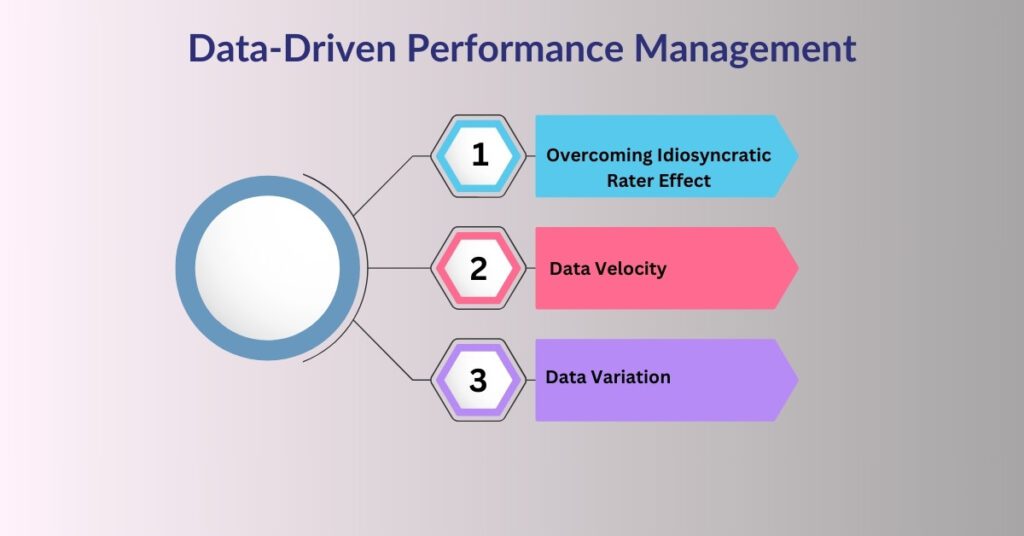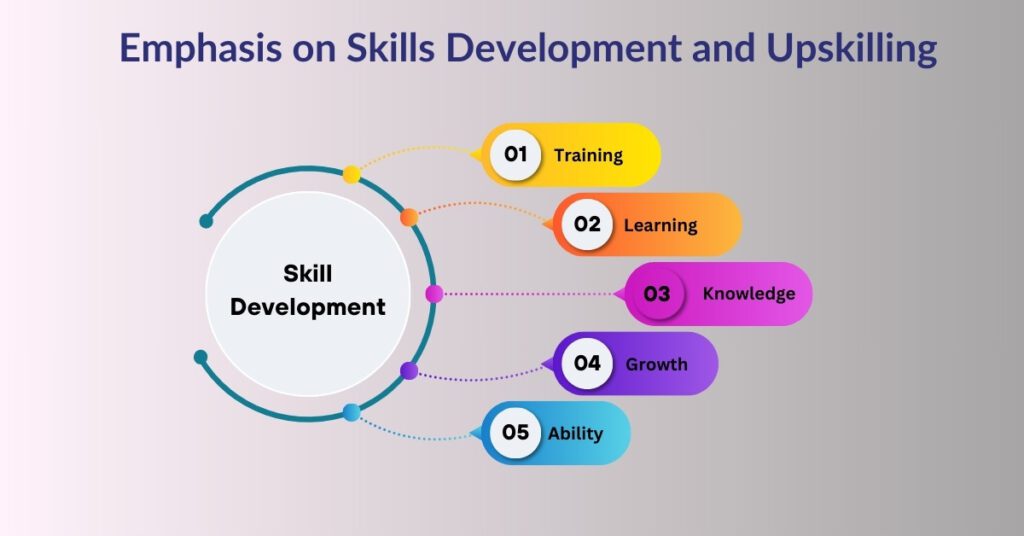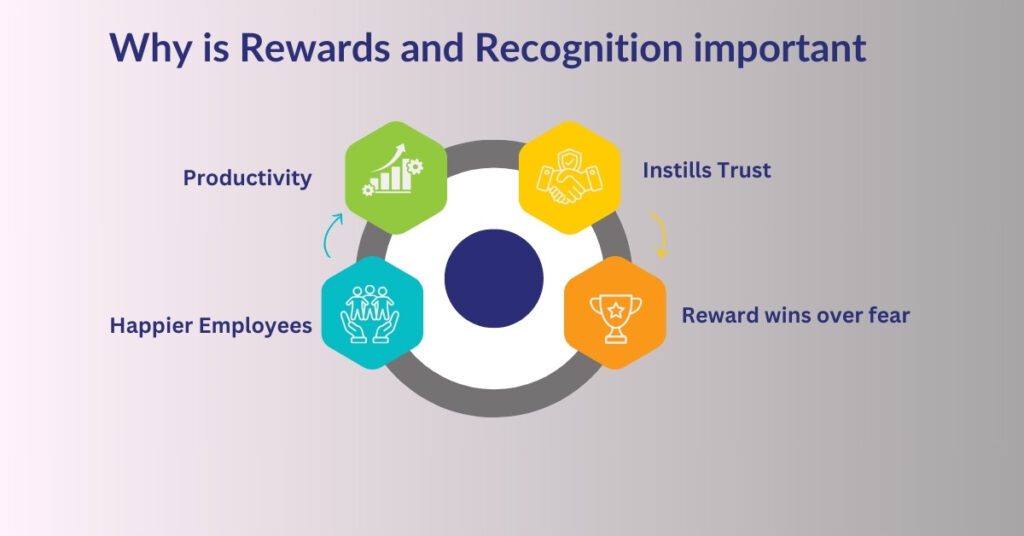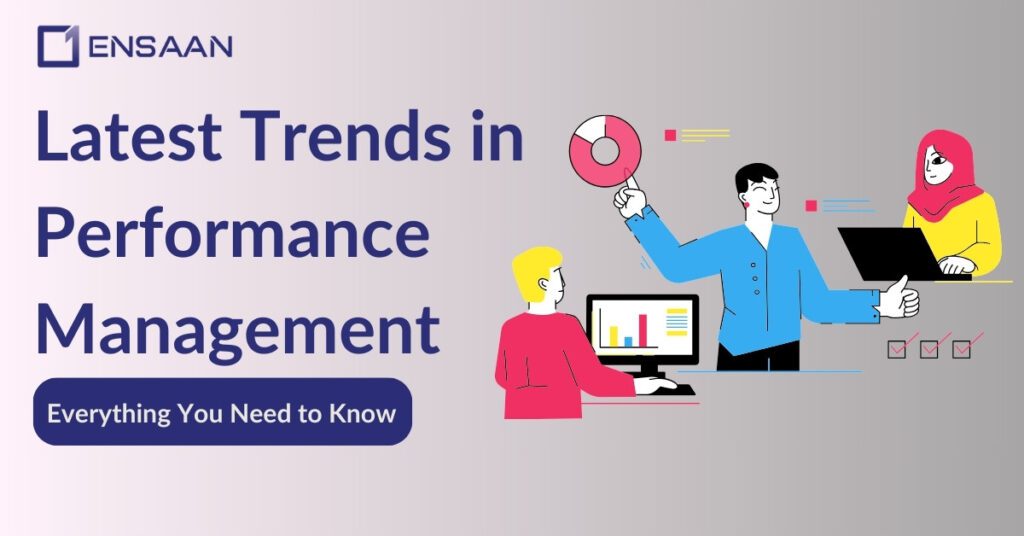Performance management software has improved a lot from the old days of yearly reviews and goal setting.
Today, companies need to rethink how they handle employee performance to stay competitive, keep employees engaged, and boost productivity in a fast-changing work environment.
Recent trends in performance management demonstrate an evolution toward adaptability, continuous feedback, and employee-centric approaches.
In this blog, we’ll explain the trends affecting performance management from 2025 onwards.
Table of contents
- What is Performance Management?
- Latest Trends in Performance Management
- 1. Continuous Feedback and Real-Time Performance Management:
- 2. Focus on Employee Well-Being and Mental Health:
- 3. Goal Setting with OKRs (Objectives and Key Results):
- 4. Data-Driven Performance Management:
- 5. Emphasis on Skills Development and Upskilling:
- 6. Shift from Manager-Led to Peer and Self-Assessments:
- 7. Personalized Performance Management:
- 8. Integration of Performance Management with Employee Experience:
- 9. Focus on Soft Skills and Emotional Intelligence:
- 10. Agile Performance Management:
- 11. Rewards and Recognition as Part of Performance Management:
- 12. Remote and Hybrid Work Performance Management:
- 13. Focus on Diversity, Equity, and Inclusion (DEI):
- 14. Employee-Centric Performance Management:
- Conclusion
- FAQ

What is Performance Management?
Performance management encompasses monitoring and evaluating how employees are fulfilling their roles.
An effective performance management process entails setting clear goals for employees and monitoring how well they are progressing toward them.
Employees and managers work collaboratively to ensure that goals and performances align with what the organization requires.
If an employee is experiencing difficulties at work, they and their manager can create a performance improvement plan (PIP) to help them recover and get back on track.
Latest Trends in Performance Management
1. Continuous Feedback and Real-Time Performance Management:

The days of waiting for a yearly review to talk about performance are over. Now, one of the biggest trends in performance management is giving regular feedback.
Employees and managers are now having regular, real-time conversations about goals, progress, and any areas for potential improvement.
- Why It Matters: Annual reviews may seem outdated by the time they take place; providing ongoing feedback ensures employees receive timely guidance to adjust their efforts and remain in line with organizational goals.
- How It Works: Tools such as Slack, Microsoft Teams and performance management software enable managers and employees to share instantaneous feedback instantly, replacing annual reviews with more frequent check-ins such as weekly or monthly meetings.
- Benefits: By creating an environment of transparency and employee engagement, this approach promotes an atmosphere of openness that addresses any potential problems before they escalate further.
2. Focus on Employee Well-Being and Mental Health:

The Pandemic brought employee wellbeing into focus, making it a key aspect of performance management.
Organizations have come to recognize that employees perform best when they feel supported both professionally and personally.
- Why It Matters: Burnout and stress can have serious repercussions for productivity and morale in any organization, so prioritizing wellbeing initiatives can foster healthier, more productive teams.
- How It Works: Managers are encouraged to engage in open conversations regarding workload, stress levels and work-life balance with their teams. Companies provide mental health resources as well as flexible work arrangements and wellness programs.
- Benefits: Employees feel valued and supported, resulting in greater job satisfaction, reduced turnover rates and enhanced performance.
3. Goal Setting with OKRs (Objectives and Key Results):
OKRs (Objectives and Key Results) have become an increasingly popular way of setting individual and team goals with organizational objectives.
This trend emphasizes clarity, focus, and measurable outcomes.
- Why It Matters: Traditional goal-setting methods often lack clarity or fail to connect individual efforts to the bigger picture. OKRs provide a structured way to set ambitious yet achievable goals.
- How It Works: Objectives define what needs to be achieved, while Key Results are specific, measurable outcomes that indicate progress. For example, an objective might be “Improve customer satisfaction,” with key results like “Increase Net Promoter Score (NPS) by 10 points.”
- Benefits: OKRs promote alignment, transparency, and accountability across the organization. They also encourage employees to think big and innovate.
4. Data-Driven Performance Management:

Data is playing an increasingly important role in performance management.
Organizations are leveraging analytics and AI to gain insights into employee performance, identify trends, and make informed decisions.
- Why It Matters: Data-driven approaches remove bias and provide objective insights into performance. They also help organizations identify high performers, skill gaps, and areas for improvement.
- How It Works: Performance management software collects data on metrics like productivity, engagement, and goal achievement. AI-powered tools can analyze this data to provide personalized recommendations for employees and managers.
- Benefits: Data-driven performance management leads to fairer evaluations, better decision-making, and more targeted development opportunities.
5. Emphasis on Skills Development and Upskilling:

As industries evolve, so do the skills required to succeed.
Performance management is no longer just about evaluating past performance; it’s also about preparing employees for future challenges through skills development and upskilling.
- Why It Matters: Rapid technological advancements and changing job roles mean that employees need to continuously learn and adapt. Organizations that invest in upskilling stay competitive and retain top talent.
- How It Works: Companies are offering training programs, online courses, and mentorship opportunities. Performance reviews now include discussions about skill gaps and career development plans.
- Benefits: Employees feel more confident and capable, while organizations benefit from a more skilled and adaptable workforce.
6. Shift from Manager-Led to Peer and Self-Assessments:
The traditional top-down approach to performance management is being replaced by more inclusive methods that involve peer and self-assessments.
This trend recognizes that employees have valuable insights into their own performance and that of their colleagues.
- Why It Matters: Manager-led evaluations can be biased or limited in perspective. Peer and self-assessments provide a more holistic view of performance.
- How It Works: Employees evaluate their own performance and receive feedback from peers. Managers then use this input to provide a well-rounded assessment.
- Benefits: This approach encourages self-reflection, fosters collaboration, and reduces bias in evaluations.
7. Personalized Performance Management:
One-size-fits-all performance management is becoming a thing of the past.
Organizations are now tailoring their approaches to meet the unique needs and preferences of individual employees.
- Why It Matters: Employees have different strengths, weaknesses, and career aspirations. A personalized approach ensures that performance management is relevant and meaningful for everyone.
- How It Works: Managers work with employees to set personalized goals, choose development opportunities, and create customized feedback plans. Technology plays a key role in enabling this level of personalization.
- Benefits: Personalized performance management boosts engagement, motivation, and job satisfaction.
8. Integration of Performance Management with Employee Experience:
Performance management is no longer a standalone process; it’s becoming an integral part of the overall employee experience.
Organizations are aligning performance management with other aspects of the employee journey, such as onboarding, learning, and career development.
- Why It Matters: When performance management is integrated into the employee experience, it feels more natural and less like a bureaucratic exercise.
- How It Works: Companies are using employee experience platforms to connect performance management with other HR processes. For example, feedback from performance reviews can inform learning and development plans.
- Benefits: This integration creates a seamless experience for employees and ensures that performance management supports long-term growth and success.
9. Focus on Soft Skills and Emotional Intelligence:
While technical skills are important, soft skills like communication, collaboration, and emotional intelligence are increasingly being recognized as critical to performance.
Organizations are now evaluating and developing these skills as part of their performance management processes.
- Why It Matters: Soft skills are essential for teamwork, leadership, and customer interactions. Employees with strong emotional intelligence are better equipped to handle challenges and build positive relationships.
- How It Works: Performance reviews now include assessments of soft skills. Training programs and coaching are also being offered to help employees develop these skills.
- Benefits: A focus on soft skills leads to better teamwork, stronger leadership, and a more positive workplace culture.
10. Agile Performance Management:
Agile methodologies, originally developed for software development, are now being applied to performance management.
This trend emphasizes flexibility, adaptability, and iterative progress.
- Why It Matters: In a rapidly changing business environment, rigid performance management processes can hinder progress. Agile performance management allows organizations to respond quickly to new challenges and opportunities.
- How It Works: Goals and priorities are reviewed and adjusted regularly, often in short cycles like sprints. Feedback is provided frequently, and employees are encouraged to experiment and learn from their experiences.
- Benefits: Agile performance management fosters innovation, adaptability, and continuous improvement.
11. Rewards and Recognition as Part of Performance Management:

Rewards and Recognition are becoming a key component of performance management.
Organizations are realizing that acknowledging and celebrating achievements is essential for motivation and engagement.
- Why It Matters: Employees who feel recognized are more likely to be engaged and productive. Recognition also reinforces positive behaviors and outcomes.
- How It Works: Companies are using tools like employee recognition platforms to make it easy for managers and peers to give shout-outs and rewards. Performance reviews now include discussions about achievements and recognition.
- Benefits: A culture of recognition boosts morale, retention, and performance.
Pro Tip: Empuls fosters a culture of appreciation by allowing employees to acknowledge each other’s contributions and maintain strong connections.
12. Remote and Hybrid Work Performance Management:
The rise of remote and hybrid work has forced organizations to rethink how they manage performance.
Traditional methods, like in-person supervision, are no longer feasible in many cases.
- Why It Matters: Remote work requires trust, clear communication, and new ways of measuring performance.
- How It Works: Companies are using technology to track productivity and engagement in remote settings. Managers are focusing on outcomes rather than hours worked and are providing regular feedback to remote employees.
- Benefits: Effective remote performance management ensures that employees stay connected, motivated, and productive, regardless of where they work.
13. Focus on Diversity, Equity, and Inclusion (DEI):
Diversity, equity, and inclusion are becoming integral to performance management.
Organizations are ensuring that their processes are fair and inclusive, and that they support the success of all employees.
- Why It Matters: Biases in performance management can lead to inequities and hinder diversity efforts. A focus on DEI ensures that all employees have equal opportunities to succeed.
- How It Works: Companies are training managers to recognize and eliminate biases in evaluations. They are also setting DEI-related goals and tracking progress.
- Benefits: A focus on DEI leads to a more inclusive workplace, better decision-making, and improved employee satisfaction.
14. Employee-Centric Performance Management:
Finally, the overarching trend in performance management is a shift toward employee-centric approaches.
Organizations are putting employees at the center of their processes, focusing on their needs, aspirations, and well-being.
- Why It Matters: Employees are the backbone of any organization. When they feel valued and supported, they are more likely to perform at their best.
- How It Works: Employee-centric performance management involves regular check-ins, personalized development plans, and a focus on work-life balance.
- Benefits: This approach leads to higher engagement, retention, and overall performance.

Conclusion
Performance management is evolving to meet the needs of today’s dynamic work environment.
By embracing trends like continuous feedback, employee well-being, data-driven insights, and personalized approaches, organizations can create a performance management system that drives success for both employees and the business.
As we move forward, the key will be to remain flexible, innovative, and focused on what truly matters: helping employees thrive.
FAQ
Performance management is the process of helping employees do their best work. It includes setting goals, giving feedback, and supporting growth.
Recognizing and rewarding good work makes employees feel valued. This boosts motivation and encourages them to keep doing their best.
For remote workers, focus on results, not hours worked. Use technology to stay connected and provide regular feedback to keep them engaged.
DEI stands for Diversity, Equity, and Inclusion. It means making sure performance management is fair and supports all employees, no matter their background.
It means putting employees first. This includes listening to their needs, supporting their growth, and helping them balance work and life.
Start small! Try adding regular check-ins, setting clear goals, or using tools for feedback. Focus on what works best for your team and build from there.








